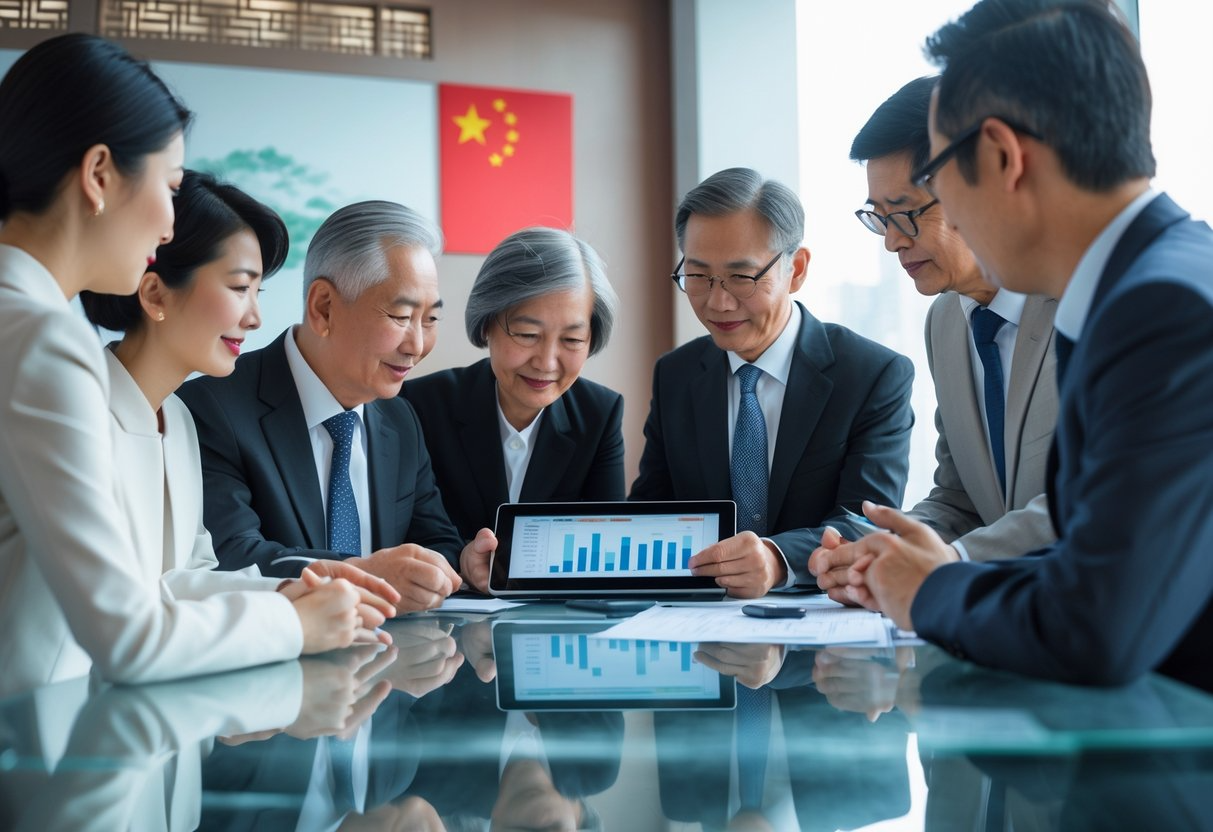URL: pensions china
META: Explore pensions China provides, the challenges of an aging population, and reforms shaping retirement security for millions.
Pensions China Provides: Retirement Security Under Pressure

Understanding pensions in China gives you a window into how retirement works in one of the world’s largest, fastest-aging countries.
China’s public pension system covers most citizens through three main programs: one for urban workers, one for urban residents, and one for rural residents. However, it faces growing challenges from an aging population and declining birth rates.
While the system is designed to provide support, many young workers and private employees hesitate to contribute due to low benefits, past mismanagement, and mistrust. This results in low enrollment in private plans and added strain on the system.
Current reforms include gradually raising the retirement age, expanding the contributor base, and introducing personal pension schemes to strengthen retirement security.
Recent reforms, like new private pension plans, give you more ways to save for the future.
Key Takeaways
- China has a three-part pension system: public, employer, and private options
- Benefits and coverage aren’t the same for everyone—urban and rural workers get different deals
- New private schemes let you save more for yourself
Overview of China's Pension System

China sets up retirement security using a multi-pillar system. There’s a mix of government pensions, employer contributions, and private savings.
The goal is to give older people basic support, but things are changing fast with people living longer.
Structure and Pillars of the Pension System
China’s pension system stands on three main pillars.
- Pillar One: The basic pension system. This includes the Basic Pension Insurance for Urban Employees and a plan for urban and rural residents. It’s mandatory and funded by both workers and employers.
- Pillar Two: Employer-sponsored pensions, or enterprise annuities. These are voluntary but encouraged to add to the basic pension.
- Pillar Three: Personal retirement savings, like tax-deferred pension accounts, have been added in recent years.
The social security system runs most of Pillar One. Pillars Two and Three are more private.
Each pillar does something different: the first gives a minimum income, the second adds workplace benefits, and the third lets you save more on your own.
Coverage and Participation
Your coverage depends on your job and where you live. Urban employees join the Basic Pension Insurance for Urban Employees. Both you and your boss pay in.
Usually, you put in about 8% of your pay, and your employer adds 16%, but this can change by region.
If you’re a rural resident or an urban resident without a formal job, you can join the Basic Pension Insurance for Urban and Rural Residents. The government helps with subsidies, and you pay less.
Participation has grown a lot in the past 20 years. Now, hundreds of millions have some kind of basic pension.
Still, some people fall through the cracks—like migrant workers or those who move around a lot.
Key Challenges and Demographic Trends
China’s pension system faces big challenges from an aging population. There are fewer workers and more retirees every year.
This puts a strain on the basic pension fund, especially in places with lots of older people. Pensions have to last longer since people live longer now.
The retirement age is still pretty low—60 for men, 55 for female office workers, and 50 for many female workers.
Some regions have more money and can pay pensions easily, but poorer areas struggle. The government wants to fix this by pooling resources nationally.
Reforms like tax-deferred accounts and raising the retirement age are underway. You’ll probably see more changes as leaders try to keep the system running.
Planning for the future starts with knowing your rights. Read our guide, Retirement Benefits in China: Policies and Eligibility Criteria to get the full picture.
Basic Pension Insurance and Public Schemes

China’s pension insurance system mixes government-run basic insurance with public plans for both workers and residents. You join these programs by paying in, either because you have to or because you choose to.
Your payments later decide how much you get at retirement.
Urban Employees and Rural Residents Coverage
Where you work and live decides your pension plan. Urban employees have to join the Basic Pension Insurance for Urban Employees.
Both you and your employer pay in. This is the biggest part of China’s pension system.
If you’re a rural resident or an urban resident without a formal job, you can join the Resident Pension Insurance. It’s voluntary, but the government chips in a lot.
This plan tries to give a minimum safety net for people without steady jobs.
By late 2023, over 1.07 billion people had some kind of basic pension insurance. That’s a pretty huge number.
Contribution Rates and Benefit Calculation
For urban employees, you split the payments with your boss. Employers usually pay about 16% of your salary, and you pay 8%. The exact numbers can be a bit different in each region.
Your payments go into two places:
- Social pooling fund (your employer’s part)
- Individual account (your part)
When you retire, you get a basic pension from the pooled fund, plus payments from your own account. What you get depends on how long you've paid in, your average wage, and the local average wage.
If you’re in the resident pension plan, you pay a small set amount each year—maybe a few hundred to a few thousand yuan. The government adds some money too. These benefits are lower, but they help as a backup.
Eligibility and Retirement Age
You can get a pension after paying in for at least 15 years. That’s true for both urban employees and residents, though how much you pay is different.
Retirement age in China depends on your gender and job. Right now, men retire at 60, women in office jobs at 55, and women in blue-collar jobs at 50.
Officials plan to slowly raise the retirement age to keep up with the aging population. This will happen step by step, so you’ll have time to adjust.
Planning for the future starts with knowing your rights. Read our guide, Retirement Benefits in China: Policies and Eligibility Criteria to get the full picture.
Enterprise Annuities and Employer-Sponsored Plans

Enterprise annuities give you a second layer of retirement income, on top of the state pension. These plans help workers in bigger companies get more security.
Structure of Enterprise Annuities
Enterprise annuities are voluntary pension plans set up by employers and employees together. Both sides pay a set percentage of wages into your account.
Usually, your employer starts the plan. Licensed trustees and managers look after the money, so it’s kept safe and separate from company cash.
They invest the money for long-term growth, but in China, they tend to play it safe—mostly fixed-income stuff, not stocks. That keeps risks low but can limit how much your money grows.
Not every company offers this. You’ll mostly find these plans in big state-owned or wealthy companies.
Participation and Tax Incentives
Both you and your boss pay into enterprise annuities. Employers can put in up to 8% of payroll, and you can add up to 4% of your wages. This money goes straight into your retirement account.
A big perk here is tax deferral. Your contributions come out of your taxable income, and your money grows tax-free until you take it out.
When you retire and withdraw, you pay taxes, but usually at a lower rate. That’s a nice bonus for long-term savers.
Since these plans are voluntary, not many people have them. If your company offers one, though, it’s worth considering for the extra income and tax break.
Workforce changes can be complex. To understand the right approach, read our article,Layoffs and Downsizing in China: How To Do It Right.
Private Pension Schemes and Individual Retirement Savings

China now has a private pension system that works with the state pension. You can open your own account, get tax breaks, and pick from more financial products to grow your retirement savings.
Private Pension Scheme Expansion
The private pension plan started as a test in a few cities and went nationwide in December 2024. Now, the system has three pillars: state pension, employer pensions, and your own savings.
As long as you have the basic public pension, you can join—no matter where you live. The goal is to take some pressure off the state system and give you more control over your retirement.
You don’t have to join, but the government sets clear rules and watches over the system. This makes it easier to start saving early and try more than just a basic savings account.
Private Pension Accounts and Tax Benefits
You can open a private pension account at certain banks. You can put in up to 12,000 yuan (about $1,650) per year, either monthly or all at once.
These accounts give you tax advantages. You pay less tax now, and your investments grow tax-free until you take the money out.
When you retire and withdraw, you pay a lower tax rate. This setup is a strong reason for many people to join.
Commercial Pension Insurance Products
Besides bank accounts, you can buy commercial pension insurance from licensed insurers. These products give steady returns and may pay out like an annuity after you retire.
People who want a stable income, not stock market ups and downs, often like these. They work well with other choices like public funds, index funds, and government bonds.
By mixing private pension accounts with commercial pension insurance, you can balance growth and safety. You get to pick what fits your risk level and income needs.
Payroll rules can feel tricky at first. For clear steps and insights, check out our piece, How Do Foreigners Make Salary Payments in China?
Bottom Line
The story of pensions China offers is about more than retirement—it’s about the nation’s future. With an aging population and fewer young contributors, the system faces serious strain.
Reforms like raising the retirement age and introducing personal pension schemes are steps forward, but trust and participation remain challenges. Retirement security is now a major concern for millions, shaping China’s economy and society.
Protecting rights is key in any society. To learn more about the laws in place, explore our guide, China's Disability Law: Rights and Protections for Disabled Individuals.
👉 To navigate these complex changes effectively, consult China legal experts for guidance and clarity.
Frequently Asked Questions
How is the pension amount calculated for retirees in China?
Your pension comes from two places: a social pooling account and your individual account. The social pooling part depends on your average salary and the local average, while your own account shows what you paid in over the years.
Are foreigners eligible for pension benefits in China?
If you work in China and pay into the system, you might get pension benefits. Local rules matter, and some cities let foreigners take out their contributions if they leave China for good.
What are the different types of retirement benefits available in China?
You can get benefits from the basic pension system (for most urban workers), plus private or workplace pensions. Rural residents have a different scheme for those without formal jobs.
What are the characteristics of China's pension system?
China’s pension system has three parts: public pension, voluntary workplace pensions, and private savings or insurance. Most workers have to join, but coverage isn’t equal—urban and rural areas have different benefits.
How is the pension fund managed and regulated in China?
Government agencies manage the pension fund. They collect payments through the social insurance system and keep a close eye on the money to make sure retirees get paid. Reforms keep happening to fix gaps and make the system last.
What is the official retirement age for men and women in China?
Right now, men retire at 60. Female civil servants and professionals retire at 55.
Female blue-collar workers retire at 50. In 2025, the government will slowly start raising the retirement age because the population is getting older.
Subscribe to receive updates
Subscribe to receive the latest blog posts to your inbox every week.



